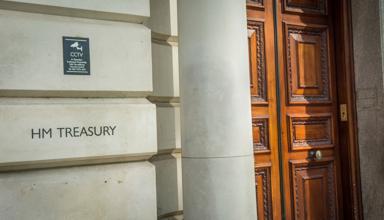The Welsh Government published its Draft Budget 2025-26 on 10 December 2024.
Click to explore the budget’s key allocations.
The infographics below summarise the key allocations by government department and how these have changed from the revised baselines in 2024-25.
Changes between the Departmental Expenditure Limits in the Draft Budget 2025-26, from the Revised Baseline 2024-25

Changes between the Main Expenditure Groups in the Draft Budget 2025-26, from the Revised Baseline 2024-25

* Excludes around £1.1 billion non-domestic rates income.
** Includes allocation of £261 million of non-fiscal revenue due to student loans.
Figures are rounded. Refer to the Welsh Government Draft Budget 2025-26 for exact figures.
Revised baselines
The Welsh Government usually sets out its Draft Budget for the forthcoming year by comparing planned allocations against Final Budget plans for the current year.
However, the 2025-26 Draft Budget compares financial allocations against a revised baseline for 2024-25.
This is a different approach to previous years as the baseline for comparison has been adjusted to account for larger-than budgeted for pay deals in 2024-25 and increased pension costs for public sector employers, for which funding consequentials have now been received from the UK Government. A number of other changes have also been made to this baseline comparison. Without making some such adjustments, year-on-year increases would have appeared significantly higher.
The Wales Fiscal Analysis stated that “baseline issues make scrutiny of these spending plans more difficult than usual” in its analysis of the Draft Budget 2025-26.
The impact of not agreeing a budget
The Welsh Government Budget is agreed by a vote in the Senedd on an Annual Budget Motion, likely to be on 4 March, and questions have been raised in the media regarding the impact of the Welsh Government not having its budget agreed by the Senedd for 2025-26.
If a Budget resolution for a financial year is not passed before the start of that financial year then initially 75% of the budget for the previous financial year is available. This figure increases to 95% if a Budget resolution has not been agreed by the end of July.
An Annual Budget Motion can be tabled and considered by the Senedd during the financial year it relates to, so the figures above would only apply until a motion has been agreed by the Senedd.
Before an Annual Budget Motion can be passed the Welsh Rates of Income Tax (WRIT) resolution must be agreed.
For 2019-20 onwards, the UK Government reduced the three rates of income tax paid by Welsh taxpayers by 10p in a pound. The Welsh Government then introduced its own rates for each band, currently set at 10p. This means Welsh taxpayers pay 10p of each income tax rate to Welsh Government with the remainder paid to the UK government.
If the Senedd fails to agree a WRIT motion, by the start of the financial year it relates to, WRIT defaults to zero. This means that relevant income tax payable for the tax year at the main UK rates for basic, higher and additional would decrease by 10 percentage points for Welsh taxpayers.
If a WRIT resolution is not agreed, it could also lead to a decrease in the Welsh Government’s revenue of almost £3.5 billion, out of a total budget of approximately £26 billion.
The next steps
Scrutiny of the Draft Budget 2025-26 is currently underway by the Finance and policy committees of the Senedd.
The Draft Budget debate is set to take place on the 4th February, you can watch it live on SeneddTV.
The Welsh Government currently plan to publish a Final Budget for 2025-26 on 25 February, with a vote on the Final Budget Motion on 4 March
Further information on the Draft Budget can be found on Senedd Research’s Draft Budget timeline and glossary.
Article by Bozo Lugonja, Senedd Research, Welsh Parliament






